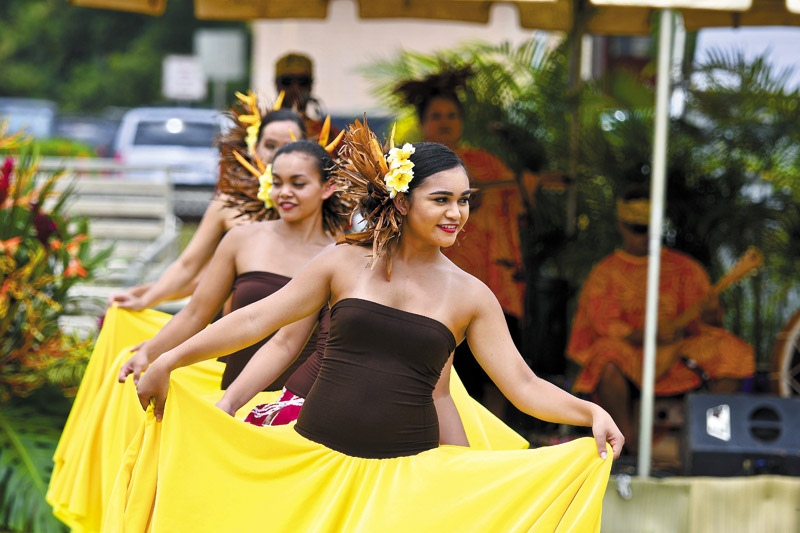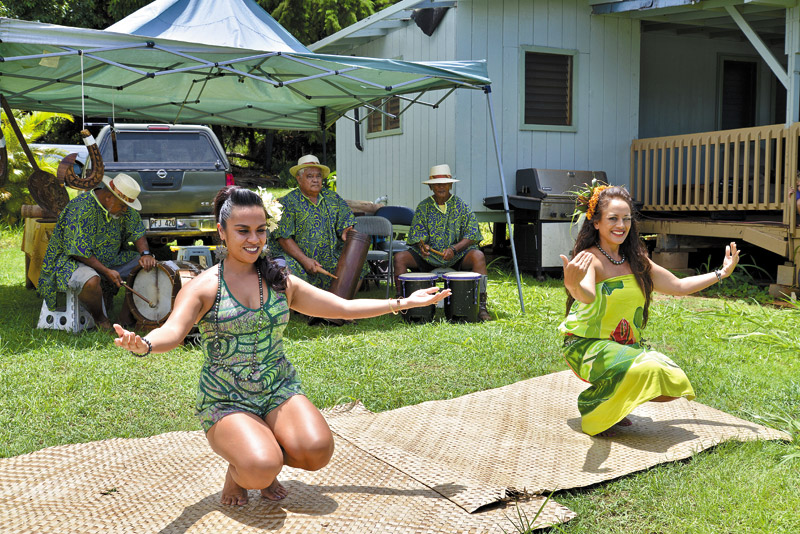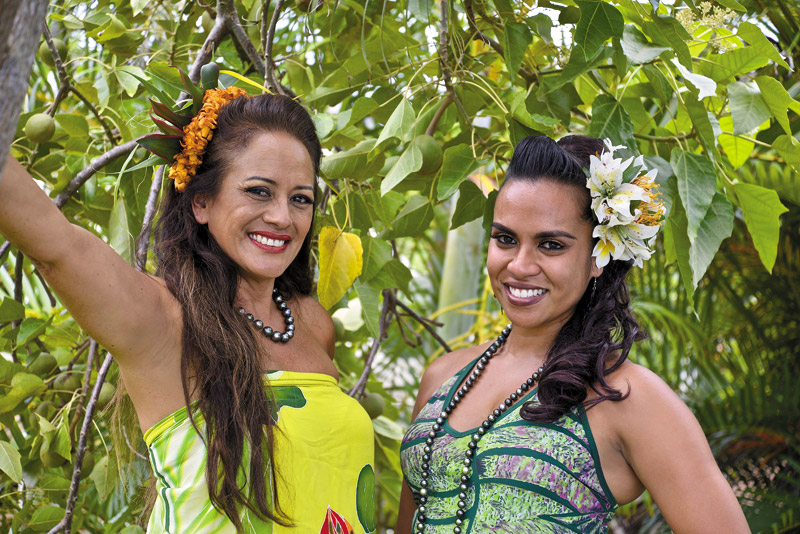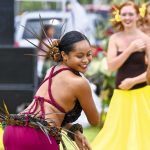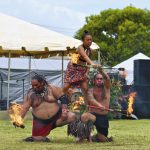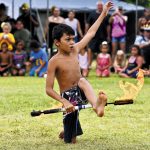Cultural Competition
The song, dance, food and history of Tahiti take center stage at Heiva I Kaua‘i Ia Orana Tahiti, slated for Aug. 3-4 at Kapa‘a Beach Park.
Tepairu Manea was born and raised in Tahiti and eventually moved to Kaua‘i in 1984.
What brought him to the Garden Isle, you might ask?
“A woman!” he exclaims with a hearty laugh.
While it was love for his wife Sally Jo that brought Manea to Kaua‘i, it was the love of his culture that motivated him to create Heiva I Kaua‘i Ia Orana Tahiti.
This year, the two-day Tahitian dance and drumming competition takes place Aug. 3-4 at Kapa‘a Beach Park. It is the only Tahitian dance festival on the island and is one of the few remaining in the entire state.
Manea used to work behind the scenes with Kaua‘i Tahiti Fete, which was produced by Carol Casil and ran for 17 years. When Casil stopped producing the fete, two members of her production committee came to Manea and asked him to continue the tradition of a Tahitian dance competition on Kaua‘i. Manea agreed because, as his wife says, “Tepairu wanted to help others learn and love the music and drumming of his people.”
Manea grew up playing Tahitian music and has been a Tahitian drummer for 22 years. But you won’t find him putting down the beat at this year’s event.
“I told my wife this year I would like to drum the show with my group, and she said, ‘No, you have too much to do,” laughs Manea. “But I am looking forward to who gives us the best show. I always look forward to that; who drums better, the best show.”
In Tahitian, the word heiva means a performance of drama, games, festival and dance. Over the years, the competition has certainly provided its share of dramatic performances.
Ori Uvira dancers Loke Sasil and Lani Girl Figaroa, both born and raised in Anahola, have each won overall first place in the individual competition. Sasil has been dancing for 24 years and has been a part of Heiva I Kaua‘i Ia Orana Tahiti since it started in 2001.
Figaroa, for her part, has been competing since 2005.
“(The heiva) is like our second home,” she says.
Aside from Tahitian dance, Heiva I Kaua‘i Ia Orana Tahiti also showcases solo fire dancing and group performances.
The two dancers come from kumu Nic Kaneakua’s hālau Ori Uvira, an annual powerhouse in the group competition.
“(Kaneakua) is so connected with the Tahitian culture,” Figaroa says. “He gives us the story behind (the dance). It’s all original, and then you see the beauty of it. He has the mana‘o, the creativity.”
Several of Kaneakua’s dancers will be entering individual categories as the famed hālau takes a year off from the group competition. On average, there are three to four groups competing and more than 100 soloists.
“This production is only possible because there are many dedicated people who love the music and dance as much as we do,” says Sally Jo. “We have a committee that comes together year
after year, and spends countless volunteer hours to prepare for the event. Now, we are looking for young people to help and learn so we can turn the reigns over gradually to keep the traditions (of) Tahitian dance, music and drumming going.”
The group Te Vai Ura Nui from O‘ahu will be performing an exhibition, and this year also welcomes a hālau from Northern California that will be entering the group competition for the first time.
“It is always exciting to see these mainland performers experience and enjoy Kaua‘i hospitality, weather and aloha,” adds Sally Jo.
“We’re only a few,” says Manea of the island’s Tahitian community. “I know everybody. We all know everybody because there’s only a few of us … the exciting part is sharing the culture itself and seeing the children enjoying themselves.”
This year, new categories have been added to encourage keiki to enter the group competition, as well. Now, the event welcomes little ones as young as age 4.
Sasil’s son began dancing when he was just 2 years old, going to practices with his mother. This year, her son is entering the individual men’s competition.
“It’s really important for the children, if you pass on the gift with love, I think it’s important for the kids. It’s a family Tahitian reunion,” says Sasil.
Figaroa agrees. “The best part of the festival is getting to learn the culture; the best dancers,” she says. “Watching the kids embrace the (culture) and even the kids understand the connection to the beat, the drummers, the counts.
“Tahitian dance is excitement. It gets your heart pumping and the storytelling is out there. To become a Tahitian dancer, you have to become really comfortable with yourself and come out of your insecurities. Then, it shows onstage that you’re present; your inner beauty comes out and makes you shine onstage. If you really want to be confident and out there, dance Tahitian.”
Along with the dance and drumming competitions, Heiva I Kaua‘i Ia Orana Tahiti includes a variety of vendors from Tahiti and food booths featuring Tahitian delicacies.
The competition is self-perpetuating, and all funds raised during the event are used to produce the following year’s event.
For more information, visit heivakauai.com.

